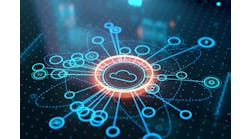Edge computing, fog computing, system control and IoT: Is this a recipe for disaster?
I’ve had trouble identifying edge computing as something different, something that we haven’t had before, and I have always come up with the fact that it is nothing more than a standard control system—a PLC or a PAC—with a new name and maybe a renewed topology.
What may be different is that the computing power goes to the data points, instead of the data points coming to the control system. Is there a difference?
The definitions of edge computing are hazy. Numbers and hardware don’t care where they do their crunching, according to an article on computing power in process applications from Control magazine.
In the article, Peter Zornio, CTO at Emerson Automation Solutions admits that the term “edge computing” was invented by IT groups because it was a new concept for them. I couldn’t agree more, so why all the hype about edge-based solutions?
Normally, the edge would be the I/O systems that were connected to a CPU somewhere and connected by some physical layer and protocol like Remote I/O or Ethernet/IP. Now it seems that the edge has to have computing power by definition.
Bedrock Automation and Opto22 have introduced edge-based products that are PLCs, albeit with new designs. But can’t any PLC be an edge PLC?
It all seems to be hooked to IoT and/or IIoT. I read a white paper titled, “Transformation of the Edge” from Stratus.
The intent of the paper is to re-define the edge, since the edge has always been there, but now it’s different because of the convergence of additional devices under the IoT umbrella. Big data is desired, and it is becoming more and more cloud-based, and thus you need the computing power at the edge to push this data up to the cloud.
The end result, according to Stratus, is the availability of edge data, which can provide better business decisions and management using that data.
Essentially, what Stratus is saying is that the RTU of the past should now be an edge controller, which talks directly to the cloud instead of the RTU talking Modbus to a PLC somewhere and giving small amounts of data periodically.
Now, that’s different, yes?
They state that some of the benefits to the OT crowd include risk mitigation due to unplanned downtime, operational efficiencies since the system can be better monitored, lower total cost of ownership (TCO) since it is a system and OT empowerment since the edge systems reduce the dependence on IT departments.
It makes some sense since the edge controllers are back in the realm of the OT peeps, which can be monitored and maintained by maintenance and/or control engineering departments.
Opto 22’s EPIC edge controller has a built in HMI, which serves up diagnostic information to the user. This user can be local or remote and get the same information, which further demarcates the edge as such since that level of information was saved for a central SCADA system.
Benson Hougland, VP of marketing at Opto 22, agrees with Status in the Control article, in that an edge solution is a system which is adept at sharing process data with the cloud, which in turn should allow for real-time decision making using the large amounts of data that would be available from the edge controller.
He also states that newer more compact protocols such as MQTT—publish/subscribe model—can be used natively making the edge system more secure.
EPIC’s HMI is Web-server-based, which allows any browser to have access removing the client licensing issue with some HMI/SCADA systems. While not a function, per se, of an edge solution, it provides a window into the fact that OT solutions are using commercial technologies as the base, such as Ethernet and HTTP.
Hougland insists that the power of an edge solution gives the user a higher-performance device than standard remote I/O type solution. That performance eases data exchange between data formats, as well as the sheer amount of data.
So is the edge really different?
Yes and no.
The device is the same and/or similar to the PLCs and PACs of yesterday, but the native system approach to the cloud and to big data is different. All things are built-in and ready to rumble.
Machine builders may want to evaluate edge solutions for some of their product lines. As Aerosmith says, we’re “living on the edge” now.





